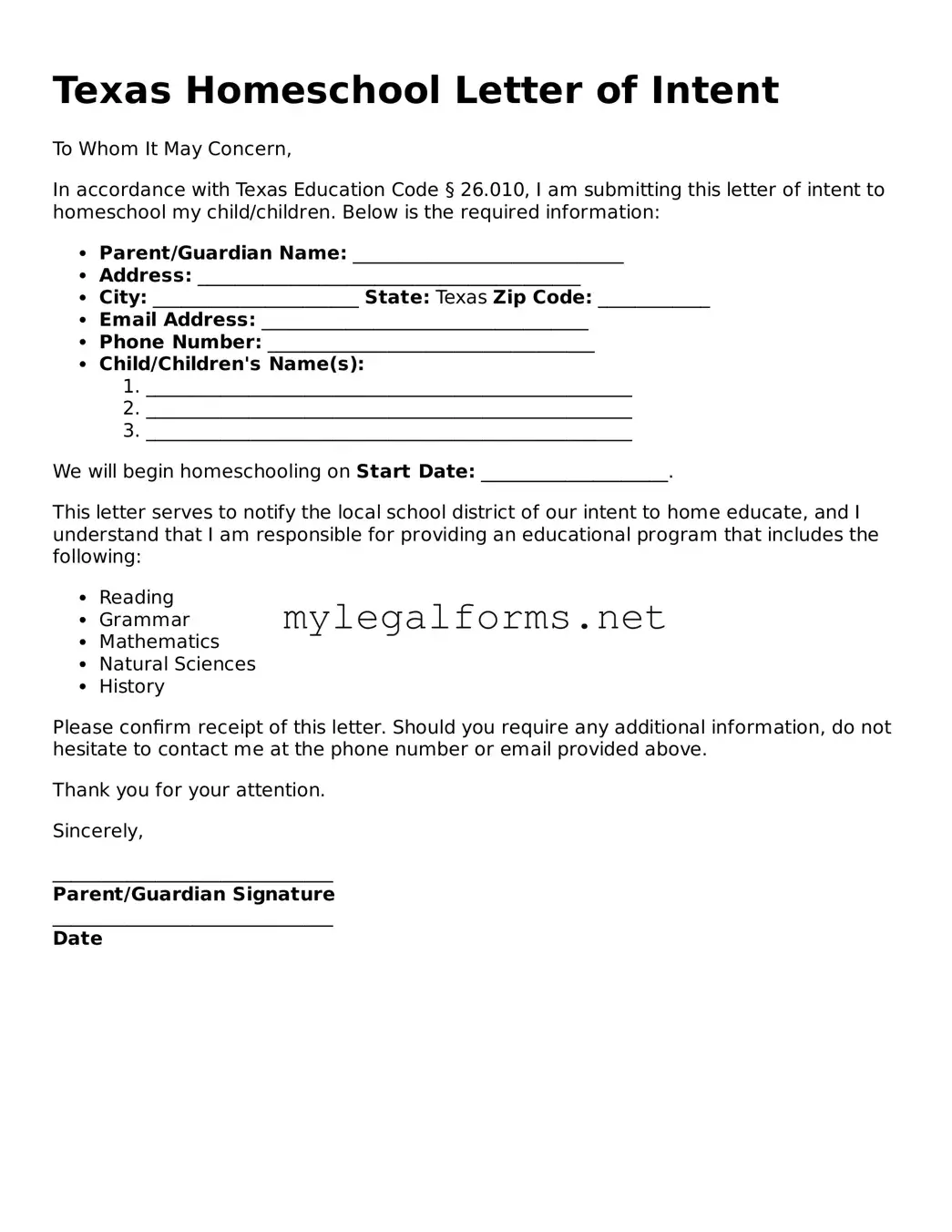Texas Homeschool Letter of Intent
To Whom It May Concern,
In accordance with Texas Education Code § 26.010, I am submitting this letter of intent to homeschool my child/children. Below is the required information:
- Parent/Guardian Name: _____________________________
- Address: _________________________________________
- City: ______________________ State: Texas Zip Code: ____________
- Email Address: ___________________________________
- Phone Number: ___________________________________
- Child/Children's Name(s):
- ____________________________________________________
- ____________________________________________________
- ____________________________________________________
We will begin homeschooling on Start Date: ____________________.
This letter serves to notify the local school district of our intent to home educate, and I understand that I am responsible for providing an educational program that includes the following:
- Reading
- Grammar
- Mathematics
- Natural Sciences
- History
Please confirm receipt of this letter. Should you require any additional information, do not hesitate to contact me at the phone number or email provided above.
Thank you for your attention.
Sincerely,
______________________________
Parent/Guardian Signature
______________________________
Date
